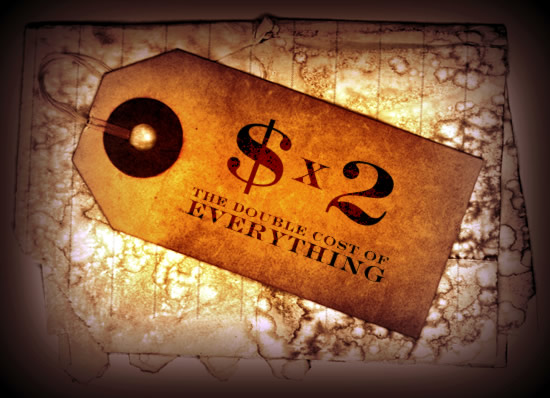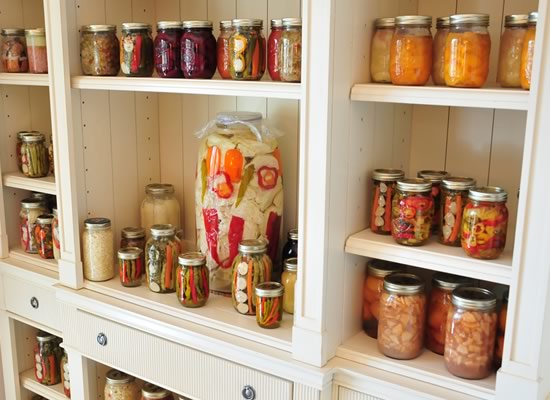Recent Entries
Nov 21, 2011 Communications

This story from the AP relates closely to the article about online police scanners that we’ve talked about in the past. For more information on police scanners, see that article which has been updated with our favorite police scanner smartphone apps.
“The practice of encryption has become increasingly common from Florida to New York and west to California, with law enforcement officials saying they want to keep criminals from using officers’ internal chatter to evade them. But journalists and neighborhood watchdogs say open communications ensure that the public receives information as quickly as possible that can be vital to their safety.
“The transition to encryption has put police departments at odds with the news media, who say their newsgathering is impeded when they can’t use scanners to monitor developing crimes and disasters. Journalists and scanner hobbyists argue that police departments already have the capability to communicate securely and should be able to adjust to the times without reverting to full encryption. And they say alert scanner listeners have even helped police solve crimes.”
Read the full story on USA Today here: http://www.usatoday.com/tech/news/story/2011-11-20/police-encrypted-radios/51319598/1
Nov 16, 2011 Firearms, News, politics
I’ve been disappointed on countless occasions to pull up to my favorite shooting spot on BLM land and see it littered not just with brass, but shotgun shells, wood crates, glass bottles, televisions, computers, water heaters and all sorts of other trash left behind by people too lazy to pick up after themselves.
I see it as a privilege to be able to shoot on that land without range fees and without the need to follow someone else’s rules. Apparently others see it as an invitation to leave the manners at home and litter openly—in most cases to a severity they would never even consider doing on the side of the road or in their neighbor’s back yard.
When I go to this area, I take garbage sacks with me and when we’re done shooting, we spend a good 20 minutes cleaning up other people’s garbage (in addition to our own) in the hopes of dispelling the reputation that shooters are so often labeled with. I encourage you to do the same.
If getting rid or improving that stereotype weren’t enough, maybe the threat of being banned from shooting on BLM lad will be. Check out this article:
Obama Pushing Shooters Off Public Lands
“Gun owners who have historically been able to use public lands for target practice would be barred from potentially millions of acres under new rules drafted by the Interior Department, the first major move by the Obama administration to impose limits on firearms.”
From the proposed policy:
“When the authorized officer determines that a site or area on BLM-managed lands used on a regular basis for recreational shooting is creating public disturbance, or is creating risk to other persons on public lands; is contributing to the defacement, removal or destruction of natural features, native plants, cultural resources, historic structures or government and/or private property; is facilitating or creating a condition of littering, refuse accumulation and abandoned personal property is violating existing use restrictions, closure and restriction orders, or supplementary rules notices, and reasonable attempts to reduce or eliminate the violations by the BLM have been unsuccessful, the authorized officer will close the affected area to recreational shooting.”
Let’s all work together to keep the freedoms we enjoy—in this case, I don’t believe it’s so much about politics as manners and a common sense.
Feb 5, 2009 Finance

Everybody knows that saving money is smart. Here’s why spending money is stupid (or at least affects you more than you’re trained to think).
When I was in college, I worked two part-time jobs. Together, the money I made from them pretty much covered my rent, food, and activities each month—but that still left me with the daunting hurdles of tuition and books to pay for each semester. While most students were applying for grants and scholarships, I turned to credit cards and float time on my personal checks.
As I tried to pay down my debt—throwing loads of cash at it, I just wasn’t making a dent. No matter how much money I was funneling toward my credit card balances, they never reflected the amount of money I really was paying toward the debt. This became one of the greatest lessons I learned in personal finance, something I call “The Double Cost of Everything.”
When I explained the principle to me wife, she said “Yeah. Most people call that ‘opportunity cost.’” Opportunity cost is probably the only subject of economics (a class I took twice) that I actually understood. It’s a fascinating subject, and if you’re not familiar with the concept (or even if you are), reading its entry on Wikipedia is a great refresher.
Opportunity cost is the value of the next best (or better) thing you could do with your money. “Double cost” is saying that because you’re spending, you’re losing your money plus your power to choose that next-best option. This loss equals 2x the dollar amount you’re paying out.
When combined with opportunity cost, the theory gives you a much more clear impression of the importance each financial decision really holds.
How It Works
When I first realized my theory, I was starting to see that if I put 400 dollars toward my debt, it wouldn’t make much of a difference in the balance on my card. The debt was too large, and when including interest, wouldn’t show a true $400 paydown.
On the other hand, if I took the $400 and spent it on a new stereo system, not only would I lose my $400, but my debt load would increase. When in debt, the $400 didn’t have the power to make me $400 richer, but if spent, it would make me nearly $800 poorer. How? Because once I used that purchasing power, it was spent. Gone. And not only was it gone, but my ability to pay down my debt was also lowered by $400. That’s the double cost of spending.
It’s not strict mathematics and no company will include opportunity or “double” costs on their balance sheet, but in the real world—when we’re dealing with humans, debt, minds, and dollars, the money you spend has twice the impact (or more as I’ll point out next) as the dollar value we naturally attach to it.
Double Cost +
When a person carries debt, additional factors push the effect of spending to more than double. Not only are you spending the money and losing power to pay down debt, but you’re also preserving the principal that you’re being charged interest on. In effect, spending the $400 is also paying 15% (or whatever your rate is) interest on it and adding to your debt horizon!
In addition, because you spent your money, if you have a new required expense (utilities, mortgage, whatever), you may have to pay that expense on credit, making the cost of that $400 even steeper.
Spending Isn’t All Bad
Of course spending money isn’t evil. If you never spend money, there’s really no reason to have any in the first place. But spending wisely, and realizing the double cost of everything will help you to prioritize and see your costs for what they really are (think double).
Responsibility
Hopefully looking at money in this way will help us to realize that we have a responsibility to save, spend, and invest wisely. If we have a family, they depend on us. And if we want to be contributors to society (which all good citizens should), we must have the means to actually contribute.
Being responsible goes a long way in cutting debt and building real wealth. Once we realize the true impact of our financial decisions, it becomes easier to make decisions that will prepare us for good times and bad.
Once I learned my lesson, I started a savings account and put a small percentage of everything I earned into it. Some would argue that the time to save comes after debts have been paid. But now that I understood my human nature, I knew that I needed to start a habit.
I also began paying down my debt with everything that wasn’t going to savings or reasonable living expenses. Today (despite the economy) I feel safe, secure, and prepared. I credit that security to my discovery of the true price attached to each expense—the double cost of everything.
Feb 5, 2009 Firearms, News
The Brady Campaign came out with their 2008 State Scorecard today. The scorecard ranks all 50 states as determined by how close they stick to Brady’s common sense gun laws.
I’ll leave it to you to decide if being at the top of the list is a good thing or not, but it seems to me that those states at the bottom have a generally smaller problem when it comes to crime committed with firearms.
Turn the scorecard upside-down, and you get an accurate ranking of true common sense gun laws—where law-abiding citizens have the right to defend themselves and their families from criminals who show little respect for any gun law—”common sense” or not.
That puts the following in our top three (including several ties)—congratulations to:
- 2- Oklahoma
- 2- Louisiana
- 2- Kentucky
- 4- West Virginia
- 4- Utah
- 4- North Dakota
- 4- Missouri
- 4- Alaska
- 5- Mississippi
* Numbers are calculated out of a high score of 100
You’re all doing something right.
Jan 27, 2009 Communications, Tips
Online police and fire scanners provide a fun and free way to get news as it happens. Check out these sites for free scanner streaming in your area
I received an email from “DL” about a few days ago asking if I had any recommendations for police scanners for her 72-hour kit. Unfortunately, I don’t have any recent experience in the area, but told her I’d do some looking around.
In the meantime, I thought it might be interesting to see if there were any live police/fire feeds online. BINGO! There are quite a few online sites that provide live feeds, and all you need is a computer with an internet connection. It can be a lot of fun to listen to what’s going on in your area via those feeds. What might be even more interesting would be emergencies, natural disaster or other large-scale events that you’ll be able to listen in on from across the country, something you wouldn’t be able to do with your own scan hardware unless you were in the same area. Some of these sites probably share a lot of the same information, but we’ve listed the best sites and apps we’ve found for online scanning below:
Favorite Online Police Scanners
Our favorite smartphone apps:
- 5-0 Radio Lite- This is free, pretty basic scanner and the one we use most. Also available is 5-0 Radio Pro which we have not tested and is $1.99 in the Apple App Store.
- Scanner911 – This app has some cool features including user recording and streaming. The app is only $0.99
- Police Scanner – This app is $4.99, so we haven’t tested it.
Obviously these sites won’t be reliable in a disaster situation (lack of power, internet, computer, etc), so they’re no replacement for an actual scanner (especially battery-powered, handheld units). But they can be a lot of fun—and useful for those of us who spend a lot of time at the desk. Plus—they’re free!
After receiving her question from DL and thinking about the benefits, I’ve been looking for a good handheld scanner to add to my own bugout bag. I still haven’t decided on what to pick up (a lot of the scanners around $100 on Amazon have pretty mixed reviews), so if you have suggestions, please let us know.
And happy scanning!
Jan 20, 2009 Firearms, News
A direct quote from the new whitehouse.gov website today:
Address Gun Violence in Cities: Obama and Biden would repeal the Tiahrt Amendment, which restricts the ability of local law enforcement to access important gun trace information, and give police officers across the nation the tools they need to solve gun crimes and fight the illegal arms trade. Obama and Biden also favor commonsense measures that respect the Second Amendment rights of gun owners, while keeping guns away from children and from criminals. They support closing the gun show loophole and making guns in this country childproof. They also support making the expired federal Assault Weapons Ban permanent.
Read the full agenda here (see Urban Policy: Crime and Law Enforcement).
The language in this policy opens the door (or perhaps more appropriately, the flood gates) to making it more difficult for people to buy, own, trade, gift, train with, and use guns, as well as the establishment of a gun registry, a ban on guns that sound and/or look scary, and I’m predicting, a massive buy-back in the near future.
And so it begins…
Jan 16, 2009 Survival
For the thousands of people in the Northeast and Midwest, these are the coldest temperatures you’ve ever experienced. Frostbite is a real danger that occurs when flesh freezes, forming ice crystals that can damage your cells. This “Staying safe in a deep freeze” article on MSNBC prompted today’s quick tip.
Prevent Frostbite
Bundle up! Wear a hat, coat, gloves and/or mittens, good boots (with an extra pair of socks), and don’t pretend you’re too manly to wear a scarf.
Hand and toe warmers are also great for keeping the frostbite at bay, but make sure you don’t place them directly against your skin for extended periods of time.
Identify Frostbite
Most commonly affected areas are the fingers, toes, ears and nose. The skin will likely be hard, feel numb, and may look waxy, white or grey.
In extreme cases, frostbite will create blisters, can turn skin black, and cuts and cracks in the skin will appear. These cases are serious and should be treated by a doctor as soon as possible. They can lead to permanent nerve damage, gangrene, and may require amputation.
Treat Frostbite
When dealing with minor cases of frostbite, warm the affected areas gradually. Using blankets, room temperature, or the body heat of another person is the best way to thaw frozen flesh at home. But DO NOT rub the affected areas or break any blisters!
DO NOT use hand warmers directly on the skin, and do not use hot water. If you do decide to use water to re-warm affected areas, be sure that the water is just above body temperature.
After re-warming, gently dry skin and keep fingers and toes separated from each other with sterile bandages (and without adhesive).
The thawing of frozen flesh is extremely painful. I recommend you take a good dose of ibuprofen or other painkiller while treating frostbite.
Hypothermia
Hypothermia is a real threat at these temperatures and can be even more serious than frostbite. If you can’t stop shivering, listen to your body and get inside.
Jan 15, 2009 News

An interesting report from The Register talks about NASA’s warning of a “Space Katrina” in which our communications and other electronics could be knocked out by massive solar winds.
The US military has previously warned of the risk of a “space Pearl Harbour” – a devastating surprise attack against America’s space presence, which could leave the world’s sole superpower blinded and crippled. According to the National Academy, though, the USA should forget about a space Pearl Harbour and worry instead about “a space Katrina, a storm that we should have been prepared for but were not”.
Solar storms have had significant effects in modern time:
- In 1989, the sun unleashed a tempest that knocked out power to all of Quebec, Canada.
- A 2003 sunstorm included 10 major solar flares over a two-week period, knocking out two Earth-orbiting satellites and crippling an instrument aboard a Mars orbiter.
And in the future, due to our becoming more dependent on satellites and other electronics for nearly every facet of our modern lives, the potential effects of any such event would undoubtedly be much greater:
Impacts would be felt on interdependent infrastructures, with, for example, potable water distribution affected within several hours; perishable foods and medications lost in about 12-24 hours; and immediate or eventual loss of heating/air conditioning, sewage disposal, phone service, transportation, fuel resupply, and so on…
Attacks in space and from space, in addition to the more common terrestrial threats we face, certainly provide plenty to keep us occupied in our preparations.
Related links:
Coming Tomorrow…
What can we do to prepare our homes and families for solar events? We’ll have a summary of potential effects as well as tips for practical preparation.
Jan 8, 2009 Food Storage

There’s been a lot of talk in the media and on the Internet over the past few months about food storage. And while there’s been a lot of talk, how many people do you think have actually taken it seriously enough to make a plan and then act on it?
Starting from scratch is a daunting task, and I wouldn’t blame anyone for putting it off until next week or the week after that…etc. The fact is though, that the sooner you get started, the better off you’ll be. Food storage is a lot like investing. Actually, food storage is investing. Starting early, keeping steady, and taking it one step at a time will pay huge dividends in the future.
Seeing the good sense in food storage is easier today than it has ever been.
Good Reason
- Food prices have been rising (especially on the basics like wheat/flour, beans, and rice) in recent months
- Gas prices (the cost of transportation and farming) have been extremely unstable
- The economy has been slumping
- Unemployment has been rising
- Food supplies have been threatened
- Pandemic, natural disaster, power disruptions, war and civil unrest all cast their influence around the world
I’m not just trying to be pessimistic or a fear monger—it’s good practice to take an inventory of current events and prepare ourselves to more easily navigate the turbulent waters that lay ahead (or that we’re currently sailing through).
Even after reading all the points above that help shed light on the importance of food storage, it might still be difficult for some to see the individual application. Here’s a quick scenario:
Disruption of Food Supply
Already this year, freezing storms have pounded much of the U.S. causing accidents, closing roads, and leaving millions without power. In the Storm of the Century (’93) and the Blizzard of 96, cities were completely shut down for days. You may have some good food in your refrigerator or pantry. But once that food is gone, where will you find more? Even if you are able to make it to the store, they may not be open until the power is back on and the employees can also make it across the roads to work. In addition, the supply trucks are likewise subject to the wrath of storms and may be stuck on the side of the road for days or more. Before long, the shelves could be empty and the local grocery store will not be able to act as our emergency food supply.
Disruption of the food supply can take many forms—from the disaster or storm-type situation described above to personal illness, job loss, or other circumstances that can make it more difficult to put the food we’re accustomed to on the table. Food storage is like a savings plan that will help mitigate those threats.
Helping Others
In addition to our own needs, we may be called on to help family, friends, and neighbors. Despite the unfriendly world we live in, I doubt I know anybody who would let and elderly widow next-door go hungry while enjoying a warm meal a door or two away. It’s also possible (even likely during the holidays) that we have friends or family over when a storm or other event strands others in our care. In these cases, having the bare minimum in the kitchen shelves won’t cut it.
Food Storage Really is an Investment
Not only is it an investment in your own safety and peace of mind, but if done correctly, can translate into real dollars. Food prices rarely go down. When you buy now for potential rough times ahead, you cut out inflation and price gouging, and you’ll inevitably enjoy a better selection than you would get if forced to buy when there’s a run on the supermarket shelves.
Types of Food Storage
There are about as many ways to do food storage as there are foods to store. Some of those methods include canning, bulk purchasing, MREs, freeze-dried and dehydrated foods, rotation systems, and even hunting (storing ammunition, anyway). In the future, we’ll go over pros and cons of each of these avenues.
And Don’t Forget the H2O
When discussing, thinking about—and even in careful planning, there’s an important point that often gets left out: Water Storage. We really should refer to it as “Food and Water Storage” rather than just “food storage.”
Humans can live a few weeks without food, but only a few days without water, so be sure to include adequate water storage in your plan. Again, we’ll cover this in-depth (no pun intended) in a later post, but for now one of the most helpful water storage resources we’ve ever seen can be downloaded here: Water Storage & Purification.
Where to Find Food Storage Help
Upcoming posts will include reviews of various food storage products and systems. There are some other great resources online to help the newcomer to get started, and that also offer great information to the seasoned survivalist—here are a few of my favorites:
There’s No Time Like The Present
If you haven’t started preparing your food storage, now’s a better time than ever. A good food storage is the foundation of any strong bug out or dig-in plan.
 Latest Entry
Latest Entry




